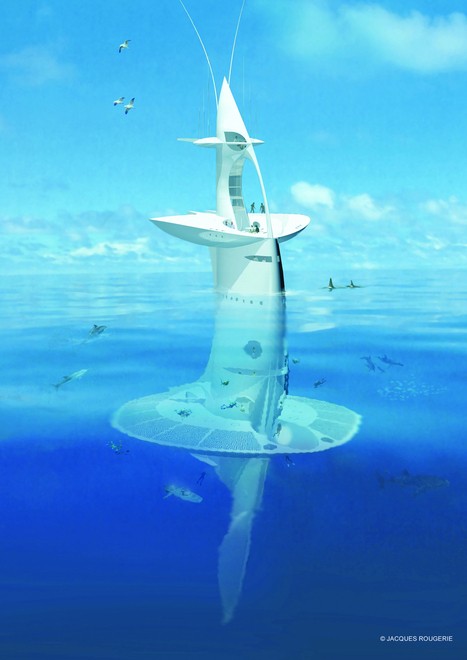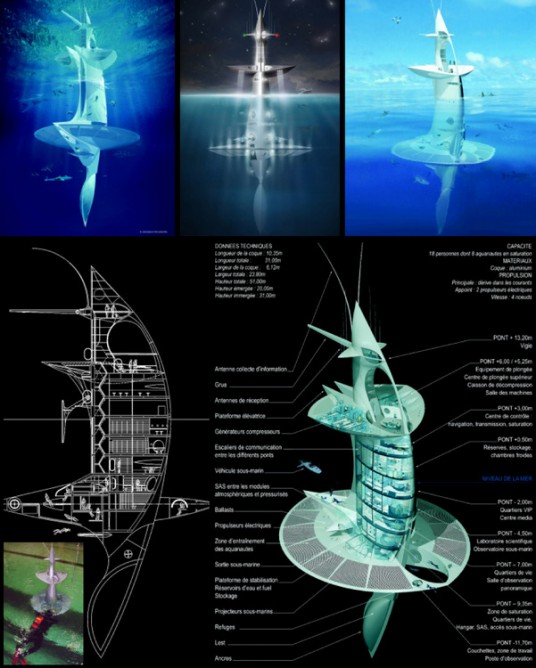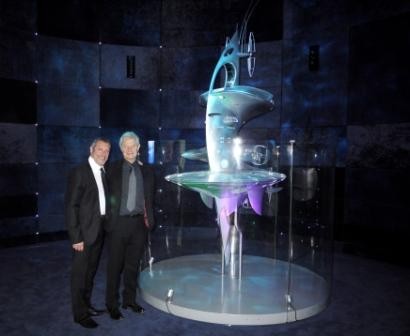
71% of the Earth’s surface is water. Marine biologists and ocean floor cartographers opine that only 20% of the world’s oceans have been explored. What lies beneath the murky depths of the world’s blue? What mysteries do the crashing waves hide? Wouldn’t we like to know?! There could be fantastic new lifeforms which may better give us an understanding on how life evolved on earth, or, there could be monsters straight from our worst nightmares. Much needs to be explored in the seas and oceans of the world can be well illustrated with the enigma of the giant squid (for instance). We only have dead specimens to prove their existence but we have yet to find one in its natural habitat. But that may be a thing of the past with the new SeaOrbiter coming into the picture.
It seems that sci fi creations are slowly turning into reality again (Jules Verne would be proud!). The SeaOrbiter ocean explorer is a futuristic vessel which is still in its conceptual stage. Designed by Jacques Rougerie (a French architect ), he has been waiting for his dream to come true for almost 12 years now. Investors and Sponsors have seen its potential and construction of the vessel will start in October and may be completed within 2013.

The SeaOrbiter ocean explorer looks like a gargantuan white aquatic cockroach (complete with feelers!). It is the world’s first free standing vertical vessel that will stand 170 feet (51 m) into the air. To better serve its purpose, half of the vessel will remain submerged underwater at all times, just like an iceberg. Considering the implications, and the vast potential of exploring and charting the world’s oceans and oceanic life, the project’s cost of US $52.7 million is extremely measly (taking into account the millions of dollars that are still being invested in the International Space Station). In addition, the SeaOrbiter will give marine biologists and scientists an opportunity to study marine life in their natural habitat, in real time. The vessel will accommodate 18 scientists/biologists and crew who will remain onboard the vessel. Rougerie has dubbed them the “Oceanauts”, who will stay on the vessel to observe and study ocean life under its transparent hull.
Now for the specifics, the semi submersible SeaOrbiter will be divided into 2 major parts. There will be a submerged chamber that goes down 102 feet (31 m) below sea level. This will be the observation level. The part above the sea level will have an open air terrace that can be used both for observation and for sun bathing! Just like Verne’s Nautilus, the submerged section of the SeaOrbiter will have panoramic windows and huge portholes (with powerful lights that will illuminate a radius of about 750m for clear visibility). A world class, mobile ocean observatory—that’s what the SeaOrbiter is! The vessel will also be outfitted with the latest in sonar and oceanographic observational equipment which will continuously feed and receive data to and fro from satellites. There is also a state-of-the-art pressurized module (with multiple levels) that will allow the ‘oceanauts’ to delve into previously unexplored depths. The vessel will be powered by non conventional sources of energy (like, tidal, solar and wind energy) and thus will neither leave any carbon footprint nor contaminate the oceans.

Rougerie will be showcasing his SeaOrbiter ocean explorer project at the International Expo, 2012, in Yeosu, S. Korea with a 1:20 scale model of the vessel. An early Christmas present for marine scientists? Sure looks like one!
Via: GizMag


